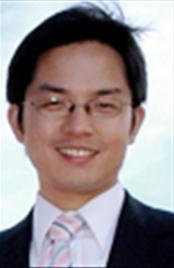报告题目:Nanostructured Energy Devices:Manipulating Electrons, Photons and Ions
报告人: Liangbing Hu, Assistant Professor, Department of Materials Science and Engineering, University of Maryland, College Park
报告地点:制浆造纸工程国家重点实验室新楼304会议室
报告时间:2012年5月6日上午9:30
报告摘要:
Lowering the cost and improving the performance of devices are essential for making renewable energy feasible for everyday applications. In this talk, I will focus on discussing how abundant materials such as paper, silicon and copper can be engineered to create one dimensional nanomaterial networks (Nano-Nets) which allow us to manipulate fundamental particles in these energy devices to ultimately obtain remarkable performance. Conductive Nano-Nets using carbon nanotubes, silver nanowires and copper nanofibers for transparent electrodes in solar cells, silicon Nano-Nets for high performance Li-ion battery anodes, and conductive paper and textiles for ultracapacitors and microbial fuel cells will be discussed in detail. I will also briefly talk about the energy research center and my research group at University of Maryland College Park.

报告人简介:
Liangbing Hu received his B.S. in applied physics from the University of Science and Technology of China (USTC) in 2002. He did his Ph.D. in experimental physics under Prof. George Gruner at UCLA, focusing on carbon nanotube based nanoelectronics. He studied extensively the charge transport in carbon nanotube thin films with randomly distributed energy barriers and its dependence on geometry (nanotube length, density et al.) and energy (frequency, temperature and field). He also explored the device applications of such random networks in field effect transistors, sensors and optoelectronic devices. In 2006, he joined Unidym Inc (www.unidym.com) as a co-founding scientist. At Unidym, Liangbing’s role was the development of roll-to-roll printed carbon nanotube transparent electrodes and device integrations into touch screens, LCDs, flexible OLEDs and solar cells. He worked with Prof. Yi Cui at Stanford University from 2009-2011, where he work on various energy devices based on nanomaterials and nanostructures including Li-ion batteries, ultracapacitors and microbial fuel cells. His work has appeared for multiple times in New York Times, BBC News, MIT Technology Review, Stanford News, SmartPlanet and many others in different languages. He has ~ 60 journal publications and ~ 10 patents/patent applications in nanomaterials, nanoelectronics, printed electronics and energy devices. Currently, he is an assistant professor at University of Maryland College Park. He is constantly looking for talented and motivated students, postdocs and visiting students/scholars. Please visit bingnano.umd.edu for more details.
